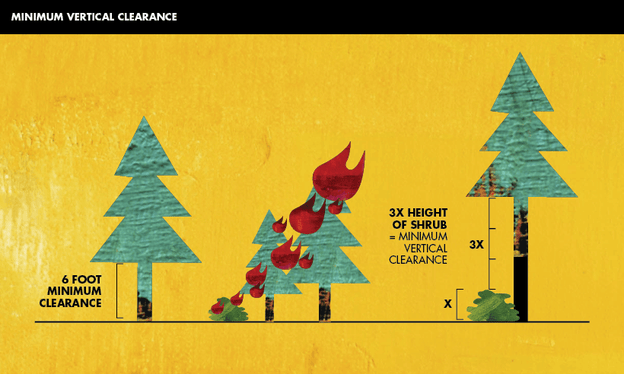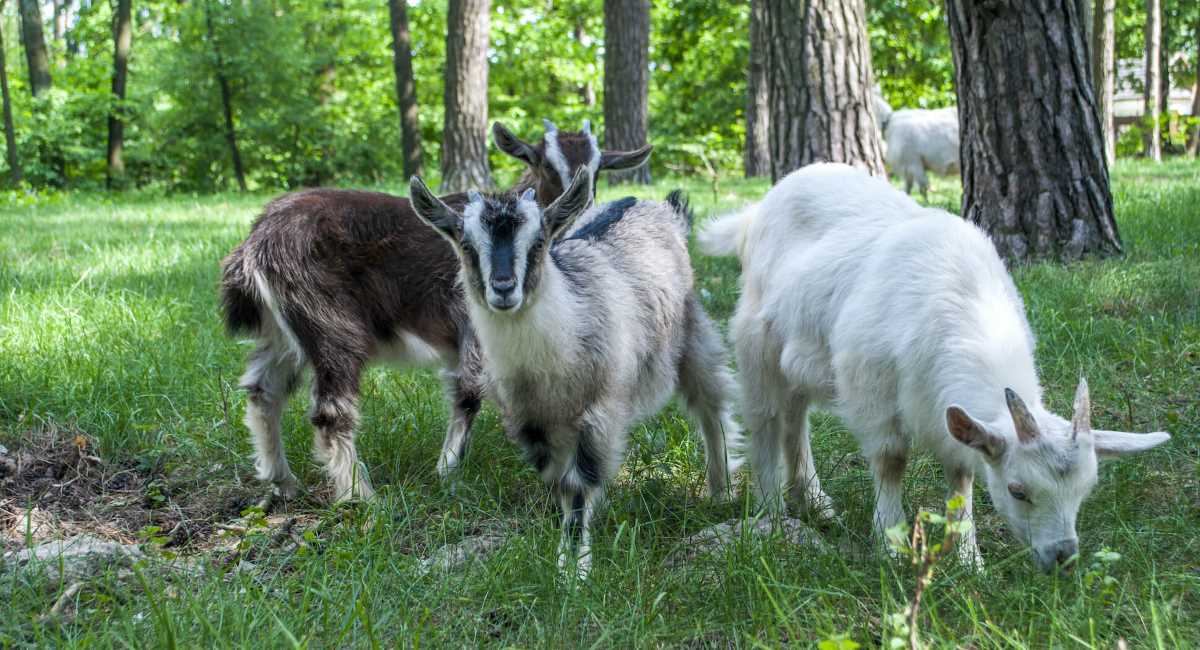The idea of defensible space is nothing new in California. But with wildfires becoming more common for people all over the US, learning how to protect homes from fire damage can be valuable for any homeowner.
In this guide, we’ll explain what defensible space is, how homeowners can maintain it with landscaping and other planning, and what its limits are. You should walk away with a clear idea of how to create defensible space around your home and where you can turn for further information.
What is defensible space?
Defensible space is an area between your dwelling and the trees and other ground cover on your property. In the case of a fire, this area acts as a buffer between structures on your property and the trees and brush that can carry the fire to your dwelling. Creating defensible space around your home can lower your exposure to wildfires.
Essentially, defensible space is a barrier around your home that has two goals:
-
Preventing wildfires (and other fires) from reaching your house
-
Giving firefighters a safe buffer zone where they can fight fires near your home
These two goals are related, of course: when it’s easier for firefighters to do their job, there’s less chance that a fire will reach your house. Then again, for fast-moving fires, you can’t always expect firefighters to arrive in time. In these situations, the defensible space itself may be enough to keep embers from igniting your home.
How Californians create defensible space
In California, defensible space itself generally consists of three zones that form concentric circles around your home and other relevant structures, like a garage. Collectively, these three zones create a 100-foot barrier.
Here’s a little more information:
-
Zone 0 is between 0 and 5 feet wide. Created by law in 2020 and going into effect earlier this year, Zone 0 is the area immediately surrounding your dwelling that serves as its most immediate buffer. This new zone protects homes from blowing embers.
-
Zone 1 is approximately 30 feet wide. In this zone, homeowners should eliminate dead plants, plant matter, leaves, and needles from the yard and gutters. Trees should be trimmed so that they’re at least 10 feet away from other trees and so that no branches overhang your roof or chimney. Large fuel sources (wood piles, propane tanks, etc.) should be moved out of Zone 1. Generally, there should be plenty of space between flammable vegetation and your house, deck, patio, porch, or garage.
-
Zone 2 extends from 30 to 100 feet from your dwelling. In this zone, homeowners should keep grasses no higher than four inches and eliminate “ladder” plants – i.e., plants close enough together to transfer fire. That means creating both vertical and horizontal space between plants. Remove flammable plant matter from this zone, too (leaves, bark, pinecones, branches, etc.).
Figure 1 illustrates what Zone 1 and Zone 2 of defensible space might look like. Figure 2 illustrates what vertical spacing for plants might look like.
Figure 1
Source: CAL FIRE, Defensible space.

Figure 2
Source: CAL FIRE, Defensible space.
Worth noting: since 2008, new homes built in high fire-risk areas in California have had to meet fire-resistance criteria. It outlines which materials homes should be constructed with to minimize the likelihood that wildfires will ignite the property.
For example, metal screens are more fire resistant than fiberglass screens; slate roofs are more fire-resistant than shake or shingle roofs; and composite decks and porches are more fire resistant than those made from wood (obviously).
Defensible space & curb appeal
There’s a myth that creating defensible space around your home will tank its curb appeal. Luckily, that’s only a myth.
In reality, the same defensible space that can protect your home and family from wildfires can also look beautiful to you and prospective buyers, if you decide to sell.
So how can you create a functional and aesthetically pleasing 100-foot border of defensible space around your home? Follow these landscaping tips and you should have no problems.
First, a caveat: The states where wildfires are common, like Arizona, California, and Texas, likely have their own laws regarding home hardening. But generally speaking, the following rules can help homeowners create defensible space around their homes.
Landscaping for defensible space
-
Adjust for hills: If land slopes down from your home, know that your fire risk is greater and you may have to create a larger area of defensible space. Fires can reach uphill fuel (like dry plants) more easily, which means fire burns faster uphill. Plus, steeper hills increase the speed of the fire, which also increases its heat and intensity.
-
Think about prevailing winds: Fires typically follow prevailing winds, so familiarize yourself with how winds blow near you. Be sure to leave an extra cushion of defensible space on the windy side of your home.
-
Create space between plants: When plants are too close together, they make it easy for fire to spread. This is why it’s important to leave both horizontal and vertical space between plants in your landscape.
-
Choose the right plants: Trees with low resin or sap content burn less easily than those with higher contents. Plants like succulents with a high water content don’t ignite as easily as dry grasses. Generally, native plants tend to work better than non-native plants (more on the best plants for defensible space below). It’s also important to choose plants with deep roots, which will help prevent erosion after a fire, even if the tops of the plants are burned.
-
Include non-plant landscaping elements: Stone or rock walkways create both visual interest and a natural firebreak. Other stone and rock elements can both break up your plants and minimize your yard’s fire risk.
Choosing the right plants can have a big impact on the effectiveness of your defensible space, so it’s worth spelling out which plants tend to work best to minimize fire risk. Here’s a breakdown.
| Plant Type | Examples | Good for defensible space? |
|---|---|---|
| Fire-resistant groundcover plants | Ornamental strawberry | Yes |
| Ignition-resistant plants |
Rockrose ce plant aloe |
Yes |
| Fire-resistant shrubs |
Hedging roses Bush honeysuckles Currant |
Yes |
| Conifers |
Pine Fir Cedar Juniper Redwood |
NO |
| Low-resin trees |
Maple Poplar Cherry |
Yes |
| Drought-resistant native plants |
Red monkey flower California fuchsia California lilac |
Yes |
The best plants for your yard also depend on your region. For detailed guidance on which plants to use in your yard to create defensible space, consult with:
-
A local plant nursery or garden store.
-
A local landscape contractor.
-
A representative from your local county extension office.
Maintaining your defensible space landscape

In addition to adding the right plants to your homestead, you also have to remove plants and plant matter that could contribute to the spread of flames. One easy way to do that is by hiring a herd of goats to clear out your land.
That’s right, goats.
We talked to Scott Morris, co-founder of San Diego-based 805 Goats, about how bringing goats to your home can make the job of maintaining defensible space easier.
First of all, he noted, “They’re great for hilly terrain.”
If your land is mostly flat, it’s probably cheaper and faster to hire a human landscaping crew to clear away unwanted brush and debris. But if you have a hilly property, goats are likely the more economical choice (Morris estimated that his goats would cost about 30 percent less than contractors, but he also acknowledged that every property is different).
“They’re also quiet,” Morris said. “Oh, and they love poison oak and poison ivy. That’s a preferred vegetation for them. Those plants are like ice cream for goats.”
That’s important for homeowners with these poisonous plants on their properties: many landscaping companies won’t send workers out to remove those plants because contact with their oils can leave employees unable to work for weeks. And if you don’t feel like exposing yourself to the plants by clearing them yourself, goats are probably a good bet.
We also asked about rose bushes and other plants homeowners may not want goats nibbling on. Morris reassured us that they have a plan for that.
“We keep goats in the intended area by putting up a portable fence,” he explained. “The day before, we cut a fence line and put up a fence around the area where the goat herd will work. Then we move the fence as the goats work through the vegetation.”
The limits of defensible space
Defensible space is a crucial part of wildfire readiness, and maintaining defensible space is the law in many areas.
But it’s also important to acknowledge that there are limits to what defensible space can do. While it can reduce the likelihood that your house will burn in a wildfire, it is not 100 percent effective. Sometimes, even the best-maintained homesteads will burn.
We reached out to Chris Schnepf, one of the researchers and authors of Protecting and landscaping homes in the wildland/urban interface, to ask whether he thought the current wildfire situation in California was a “new normal,” and if so, what that meant for homeowners.
“Fire is still fire,” he said. “But fire seasons are getting longer, and we still have a backlog of fuel accumulations to deal with in many regions of the West.”
He went on to say that, “Regarding homeowners, it’s more important than ever for their homes to be prepared to reduce ignition likelihood, especially from the larger fires that send lots of embers ahead of them.”
So vigilance remains important. And part of that vigilance is preparing for the worst-case scenario – that is, the times that your defensible space doesn’t prevent the spread of flames. In those situations, the wildfire insurance included in your homeowners insurance can help you rebuild and recover after the loss of your home.


